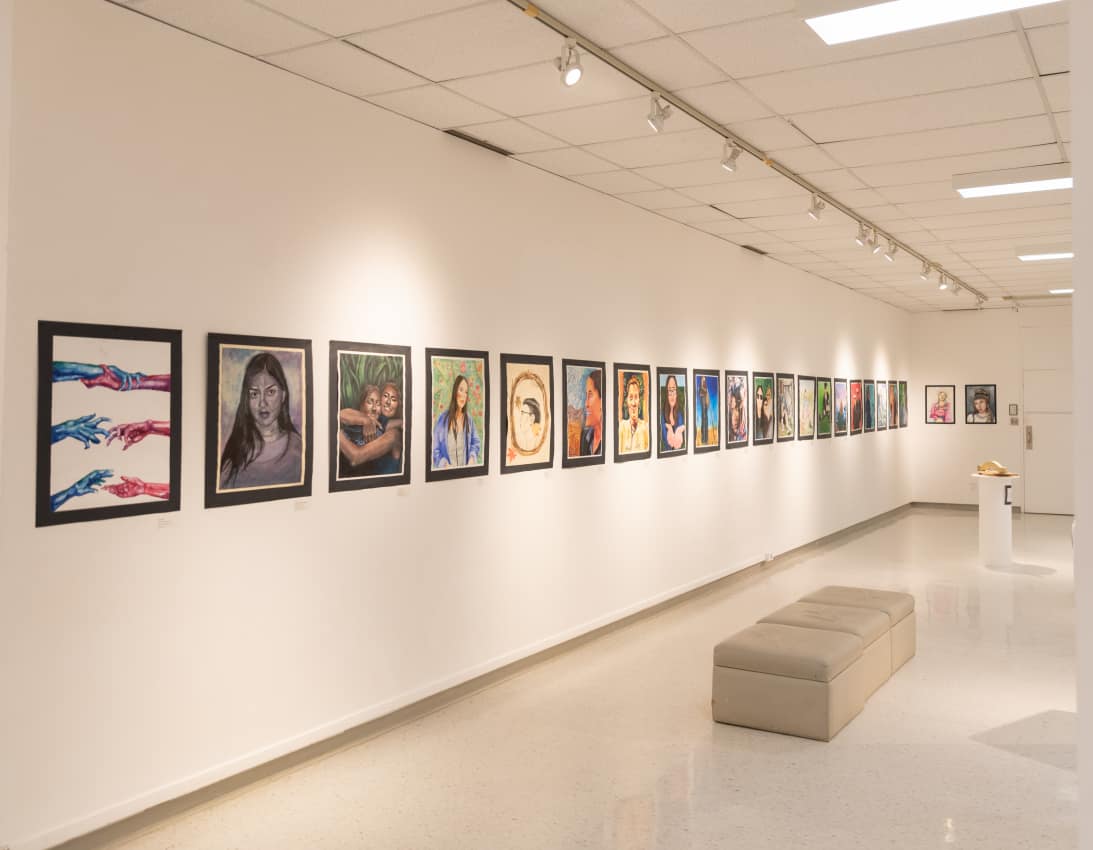Homeland, an art show put on by students from Bishop James Mahoney and Holy Cross High School, was held at the Gordon Snelgrove Gallery on from Jan. 7 to 11. As part of the show, students worked with Métis artist Leah Dorion, exploring the power of Indigenous knowledge and connections to the land around Saskatoon.

Walking into this exhibit, I knew very little about it. In fact, all I knew was that it was focused on reconciliation. Had I known that every piece in the exhibit was created by high school students, I may have gone in with much lower expectations.
This is not to say that high school students can’t be talented, only that it seems unlikely that entire grade 11 and 12 classes would be made up of such phenomenal artists. Well, in this exhibit, that seemed to be exactly the case. Every single piece displayed belonged in a gallery.
Teachers Roberta Ross and Ann Donald worked together in an effort to receive a McDowell Foundation grant to be able to join forces with Dorion for this project, according to teacher Roberta Ross. As part of the project, the students went on outings and learned about reconciliation and Indigenous knowledge.
The point of the project was to help these youths understand the history of the land, which was then incorporated into their art. For example, after learning of the important role that willow sticks played as a building material to some First Nations peoples, the students had to create sculptures to represent what home means to them while implementing willows sticks into the pieces.
The interesting thing about this show is the perspective. The classes involved in the show were made up of immigrant students, Indigenous students and settler students, and these different perspectives were visible in the art. There is also a certain vulnerability in the in the artwork itself.
Many of the pieces were very moving, and the sentiment behind them was often clear, even without the explanation given on some of the works. While every student was given the same assignments, they each made something different and uniquely their own. Throughout the exhibit, there were themes of family, home, oppression, colonialism and identity.
The art in the gallery was made with a variety of different methods and mediums. There were sculptures, paintings, pencil drawings and mixed-media works. This created a very visually interesting and dynamic exhibit. The art was grouped by medium or project, but even these groups were still aesthetically diverse.
Homeland was an excellent opportunity for both the Snelgrove and the students involved. It is fantastic that the gallery provided a platform for the topic of reconciliation. For young students to have the chance not only to explore their artistic capabilities and work with a professional artist but also to have their creations displayed in a gallery is incredible.
This experience will likely lead to more artistic endeavours in these students’ futures. It is important to foster a strong sense of creativity in young people, and it is likely that at least one student discovered a passion for art through this experiment. Beyond that, it is important that everyone is informed on the topic of reconciliation.
—
Amber Adrian Jackson
Photo: Riley Deacon / Photo Editor